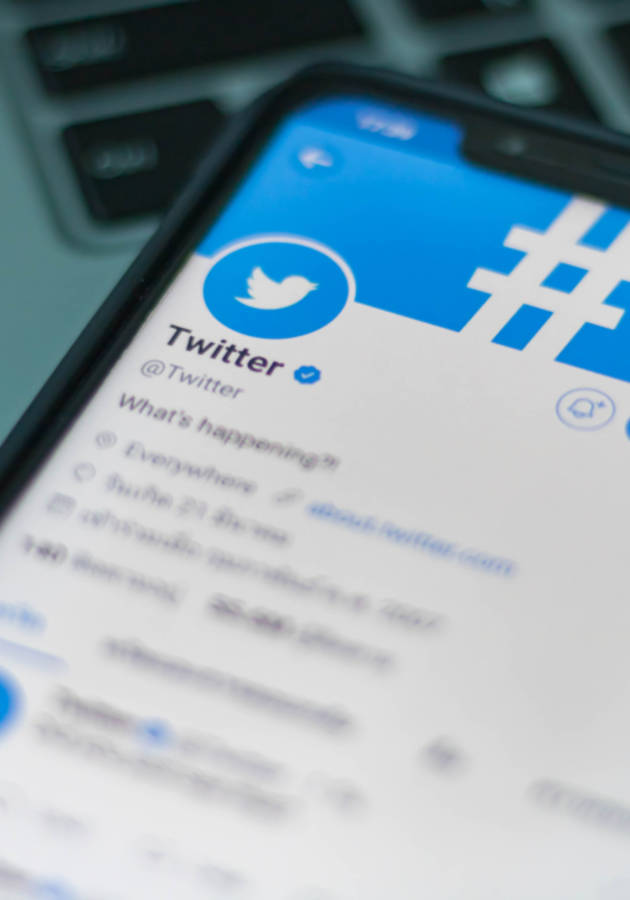Do you struggle with meeting new people or making friends? Do you find it hard to approach strangers? The good news is you don’t even have to speak to people to get them to like you!
In “The Like Switch,” Jack Schafer shares wisdom gathered after years of working as an FBI agent – how to make people instantly like you, how to maintain friendships and how to know if someone is interested in you. So, get ready to discover how to become the most popular person in town!
Getting people interested in you
Being social lies at the very heart of being human. In our current digital age however, it is harder than ever before to meet people and to make friends with strangers. Our addiction to online technology often results in us not knowing how to deal with others face-to-face. And while the internet offers us many ways to meet people without having to leave our comfort zones, the anonymity of the web also offers ample opportunities for relationship scams.
Fortunately, there is an easy way to meet new people and build lasting friendships outside the digital world, and you don’t have to rely on chance for this. It is all a matter of using proven scientific knowledge and techniques. To make friends, simply follow the friendship formula: establish frequency, proximity, duration and intensity with another person. One of Schafer’s tasks with the FBI was to successfully recruit a foreign diplomat, “Seagull,” as a spy for the U.S. He achieved this by following the friendship formula.
First of all, proximity was established. Another FBI agent, Charles, stationed himself along Seagull’s route to the grocery store, so that he would start to notice him. This meant that Seagull did not feel threatened by Charles, but recognized him. Sharing a physical space with someone increases the likelihood of becoming attracted to them.
The second step towards friendship is frequency. This meant that Charles needed to increase the number of times he was seen by Seagull. Duration also plays a role in making another person feel comfortable with your presence, so after a few months Charles began following Seagull into the grocery store to make sure he was seen by him often.
Intensity, the final ingredient of the friendship formula, is related to how strongly “you are able to satisfy another person’s psychological and/or physical needs through nonverbal and verbal behavior,” says the author. In the case of Charles, his constant presence and the visual contacts he established with Seagull led to Seagull being curious about Charles. When Charles finally approached him one day, Seagull was open to talking to him and they managed to establish a friendship. Seagull was eventually employed as a spy for the United States.
In your personal relationships, it is possible to use a “curiosity hook” to get other people interested in you. Philip, a young man who had recently moved to Los Angeles, was trying to make some friends. To do so, he started to frequent a bar near where he lived. Once there, he would order a drink, display and examine marbles from his collection on the bar. This caught the interest of the bartender, and they soon became friends.
Sending friend signals
When we are out in the world, we are constantly sending and picking up signals. Schafer calls this ‘’the territory scan.’’ Most people will show up as neutral, meaning we won’t notice them, but others will catch our attention - either as potential friends or foes.
As we go about our day, we are either sending friend or foe signals. Many people, especially those who grew up in big cities, are subconsciously sending foe signals. This is termed “the urban scowl” and is a facial expression that discourages other people from approaching you. So, if you have been struggling to make first contact with strangers, it might just be that you are sending non-verbal signals that you do not wish to speak to them.
You may be surprised to hear this, but humans actually have a few things in common with fireflies. Fireflies use the lighting up of their bodies to send mating signals to other fireflies. Humans have such a signal as well, what Schafer calls the “eyebrow flash.”
The eyebrow flash is a signal sent subconsciously, which lasts for about one-sixth of a second. In quick succession, eyebrows move up and down. When we approach others, our brain automatically looks out for this signal. It shows that the other person is interested in meeting you. So next time you want to meet someone, try out the eyebrow flash yourself.
Another sure way of sending friend signals is by tilting your head slightly to the side. This exposes your carotid artery, one of the most vulnerable points in the human body. By tilting your head, you appear more trustworthy and attractive. Men tend to do this less than women do, as an upright head signals dominance. In a dating environment, however, this can be perceived as a predatory move by women.
Finally, a real smile can make all the difference when meeting someone for the first time. The human brain can tell real and fake smiles apart. But a genuine smile will make you seem friendly and attractive to others, and will also release endorphins, which will give you a sense of well-being.
Approaching someone
Once you have established a friendly basis via nonverbal cues, it is time to make verbal contact with the other person. For this to be successful, you should try and make the other person feel good about themselves. This will result in them seeking you out to get this feeling again, and they will even try to help you in return. Schafer says he managed to get quite a few flight upgrades in his time using this technique.
One sure way of making people feel good is through empathic statements such as, “You look happy today.” That way, the other person knows you are paying attention to them. These statements are also excellent replies to something the other person has told you, to show them that you care. Start a sentence with, ”So you … ” such as, “So you are having a good day.”
If you want to use compliments to make the other person feel good, remember that you often don’t know someone new well enough to give them a sincere compliment. So instead, allow them to compliment themselves. Construct the dialogue in a way that lets them value and recognize their own achievements.
If you want to establish successful friendships, good communication is essential. However, paying attention to what other people say is sometimes challenging. In fact, an experiment conducted in the 20th century demonstrated that it is actually possible to block someone out completely. In the experiment, a cat was put in the same room as a metronome. Every time the metronome made a clicking sound, the noise would show up in the cat’s brain activity. As soon as a rat was put in the room, the cat’s focus shifted to it. Even though the metronome was still ticking, no brain activity showed up anymore. It is the same with humans: we often don’t hear what the other person is saying.
Communicating effectively
To communicate effectively, remember the acronym LOVE: Listen, Observe, Vocalize and Empathize. Listen to what the other person has to say. Keep your attention on them by maintaining eye contact - we think four times faster than we speak, so do not let your thoughts wander.
Observe the other person’s nonverbal signals before, during and after you or they have said something. These can give important clues as to how the conversation is going. Pay special attention to subtle nonverbal clues, such as the lip purse (a slight puckering of the lips signaling disagreement), to get an idea of what the other person is thinking. The more pronounced the lip purse, the stronger the disagreement. Once you notice the other person becoming disengaged or disinterested, change the subject to keep the conversation interesting.
How and what you say can also influence the conversation positively or negatively. Your tone of voice, for example, changes the meaning of what you say: a deep voice signals romantic interest, while a high-pitched voice can signal surprise or skepticism. Sarcasm can only be understood if conveyed with the right intonation, so should be avoided in written messages.
Finally, let the other person know that you empathize with them. You can use empathic statements or other verbal comments. If you have the chance to observe someone before you speak to them, they will often reveal clues as to how they are feeling, and this will give you a jumpstart in dealing empathetically with them.
To maintain lasting relationships, keep showing the other person that you care by listening actively and supporting them. Little displays of affection and compliments, even after several years of being together, can go a long way in maintaining a friendship or partnership. And finally, by continuing to signal empathy for the other person, a relationship will prove to be long-lasting.
Does the other person like you?
You can look out for nonverbal cues such as the eyebrow flash to see whether the other person is interested in meeting you as well. This is called testing for rapport, to see if there is a connection between the two of you.
Eye contact is a strong indicator of a possible friendship. By locking gaze with someone for no longer than a second, you can send a first signal of interest. Once you know someone a bit better, prolonged eye contact can signal romantic interest. Pupil dilation is also a giveaway - our pupils expand when we look at something we like. Light, however, also influences pupil dilation.
Touching can have positive effects on developing a friendship as well. Touching the arm of a person will be seen as a friendly signal by most. Touching the hand, on the other hand, has strong romantic connotations. Women lightly touch men more often than the other way around. This is not an invitation to have sex (although it is frequently misread as such) but simply shows that she likes him.
When you talk to someone, try changing your body posture. If the other person mirrors what you are doing (isopraxism), they are sending friend signals. In the same way, you can signal your interest by mirroring whichever posture the other person has adopted.
These laws of attraction define whether two people will like each other or not. For example, common interests, experiences or attitudes are a strong uniting factor. Misattribution also often leads to attraction: sometimes, people feel good about themselves for no apparent reason. If you happen to be near them at the time, it can happen that they attribute their good feeling to you. This often happens with people during exercise, as endorphins are released during this time. So, the gym is a great place to meet people!
Final Notes
Dr. Jim Reilly, a former astronaut, summed up “The Like Switch” pretty accurately when he said: “Whether you wish to be better at sales, reading a room, or recruiting Soviet spies, Jack outlines the skills necessary to make you a better communicator at all levels. As a professional, I learned something new on almost every page that will help to influence others. You will find hundreds of tips and insights in this book that will be immensely useful in any business or social setting.”
12min Tip
Next time you meet someone new, try to send and analyze nonverbal cues to find out whether this could be a possible friendship.





























